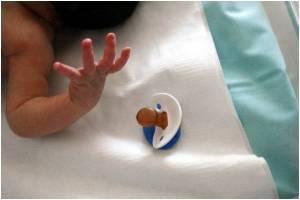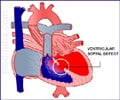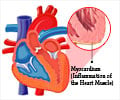A recent research paper recommends for national congenital heart disease (CHD)screening for newborns using a simple test called pulse oximetry that measures oxygen in blood.

"Screening for low-blood oxygen saturation can be an effective way to identify otherwise well-appearing babies who have undetected critical CHD," said one of the report's authors, Alex Kemper, M.D., Associate Professor of Pediatrics at Duke University Medical Center. "One of the biggest challenges in implementing screening will be the follow-up after a positive screen."
Many of the identified babies will require an evaluation by a pediatric cardiologist or an echocardiogram, or ultrasound of the heart, before they can go home. Because not all hospitals have these services, some babies may need to be transferred to other hospitals.
"Therefore, it is very important to avoid false positive screening results," Kemper said. "We believe that the strategy we have developed will identify most cases but also have a false positive rate of less than 1 percent."
The group's recommendations are based on large studies conducted in the United States and Europe. However, there are still many unanswered questions about how to best screen, including timing and the standards for a positive screen.
For example, the algorithm's usual cutoff point for oxygen saturation may need to be adjusted for babies in high-altitude nurseries, where blood oxygen levels may be normally slightly lower.
Advertisement
The report was endorsed by the American Academy of Pediatrics, the American College of Cardiology Foundation, and the American Heart Association.
Advertisement
"This will be a great opportunity for other states to learn how to begin screening on a wide scale," Kemper said.
As more information is learned about how to safely and effectively screen newborns, other states are likely to adopt similar rules. In addition, the Secretary of Health and Human Services is now developing a plan to assist states in the identification and treatment of newborns with congenital heart disease.
Pulse oximetry is a noninvasive test that under the new recommendations would be applied to the right hand and a foot of a newborn, to get two different readings of oxygen levels in blood. Pulse oximetry uses light at different wavelengths that passes painlessly through the patient's skin and then measured by a detector to determine the percentage of oxygen-bound blood. A low level can result from CHD, certain infections, or other serious health problems. For screening, testing should ideally occur after the baby is 24 hours old, because there are many changes in the circulatory system very early in life that can cause a false positive screen.
Source-Eurekalert















